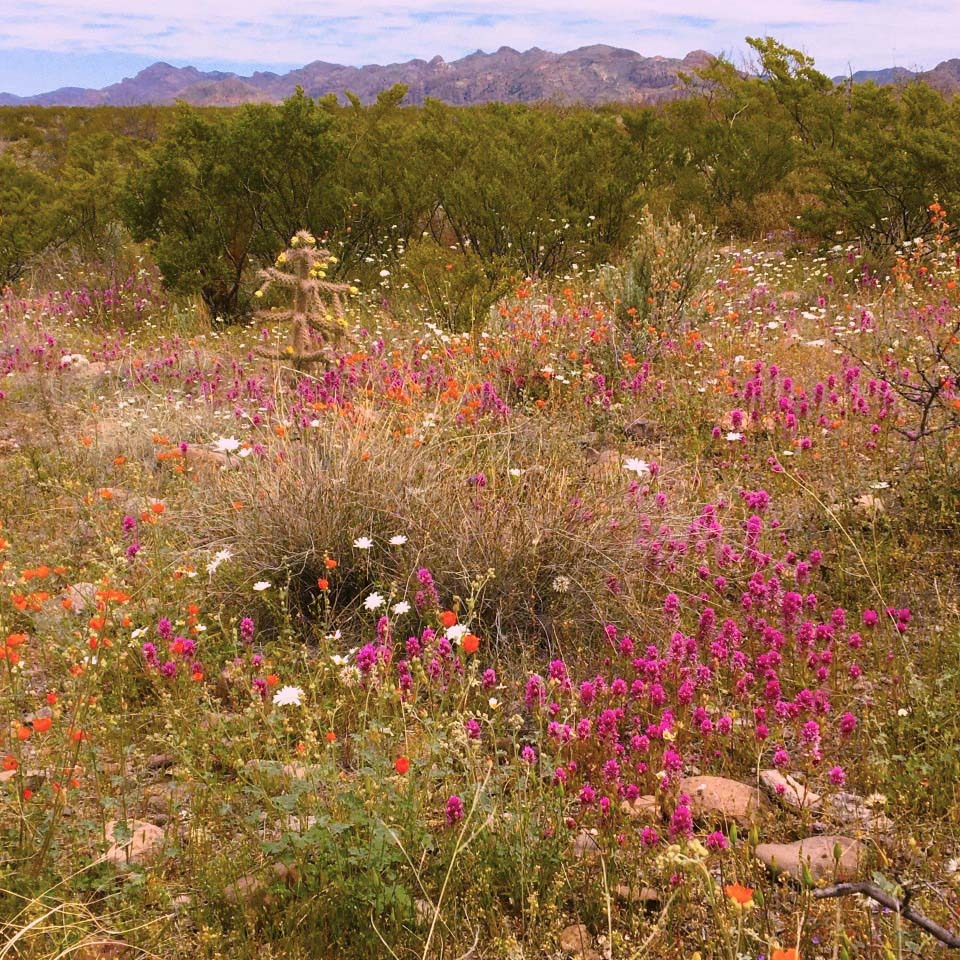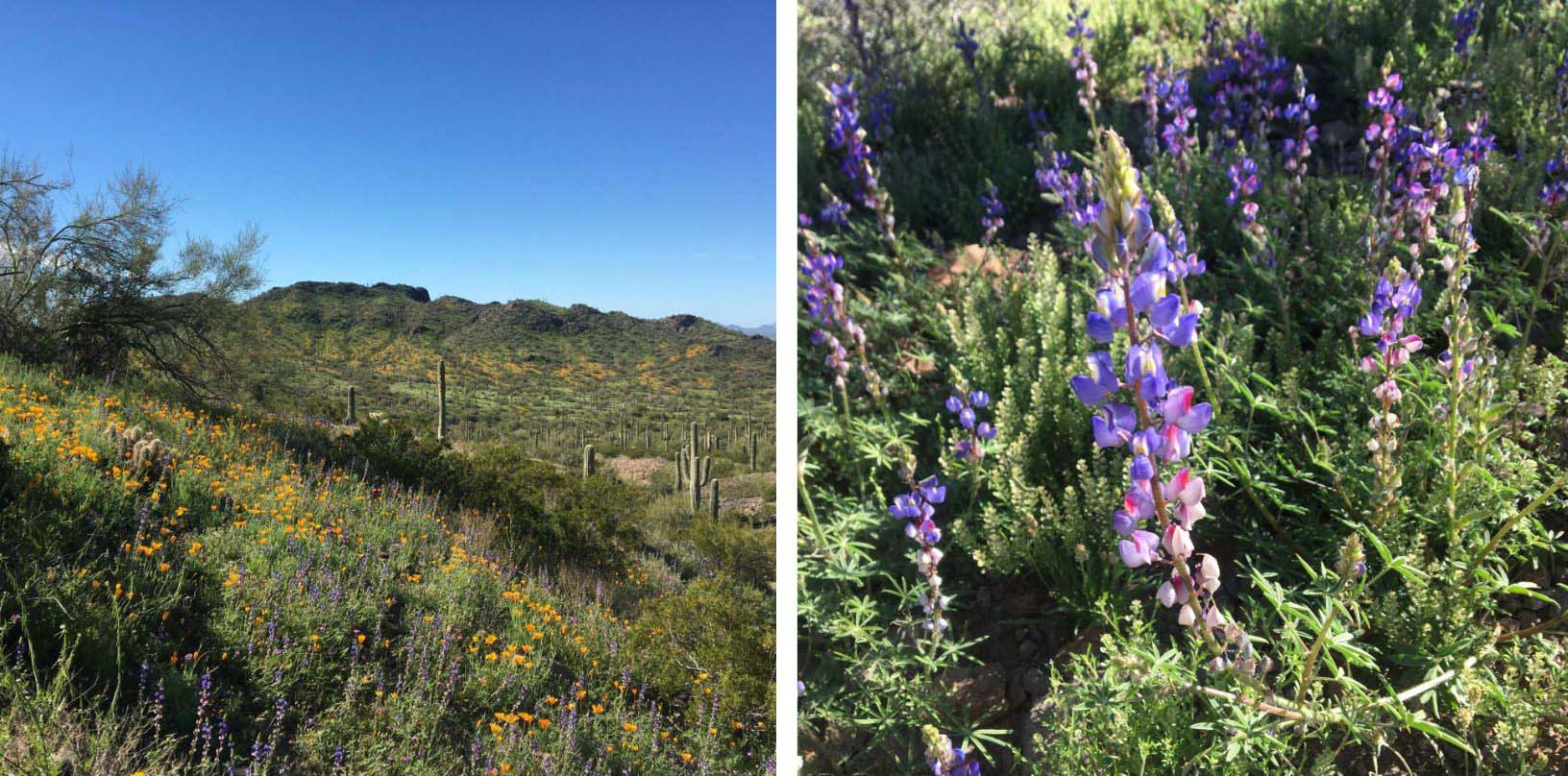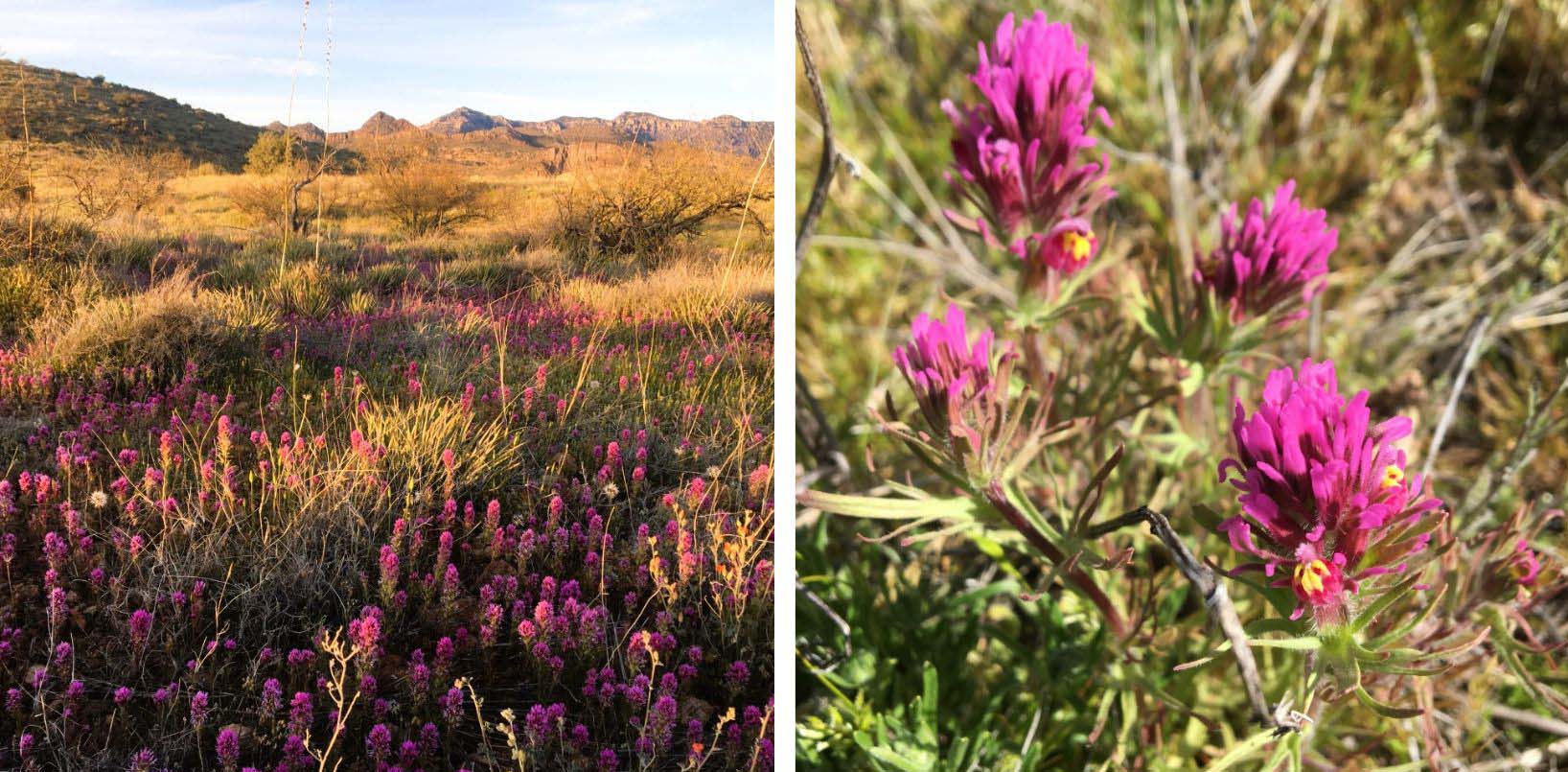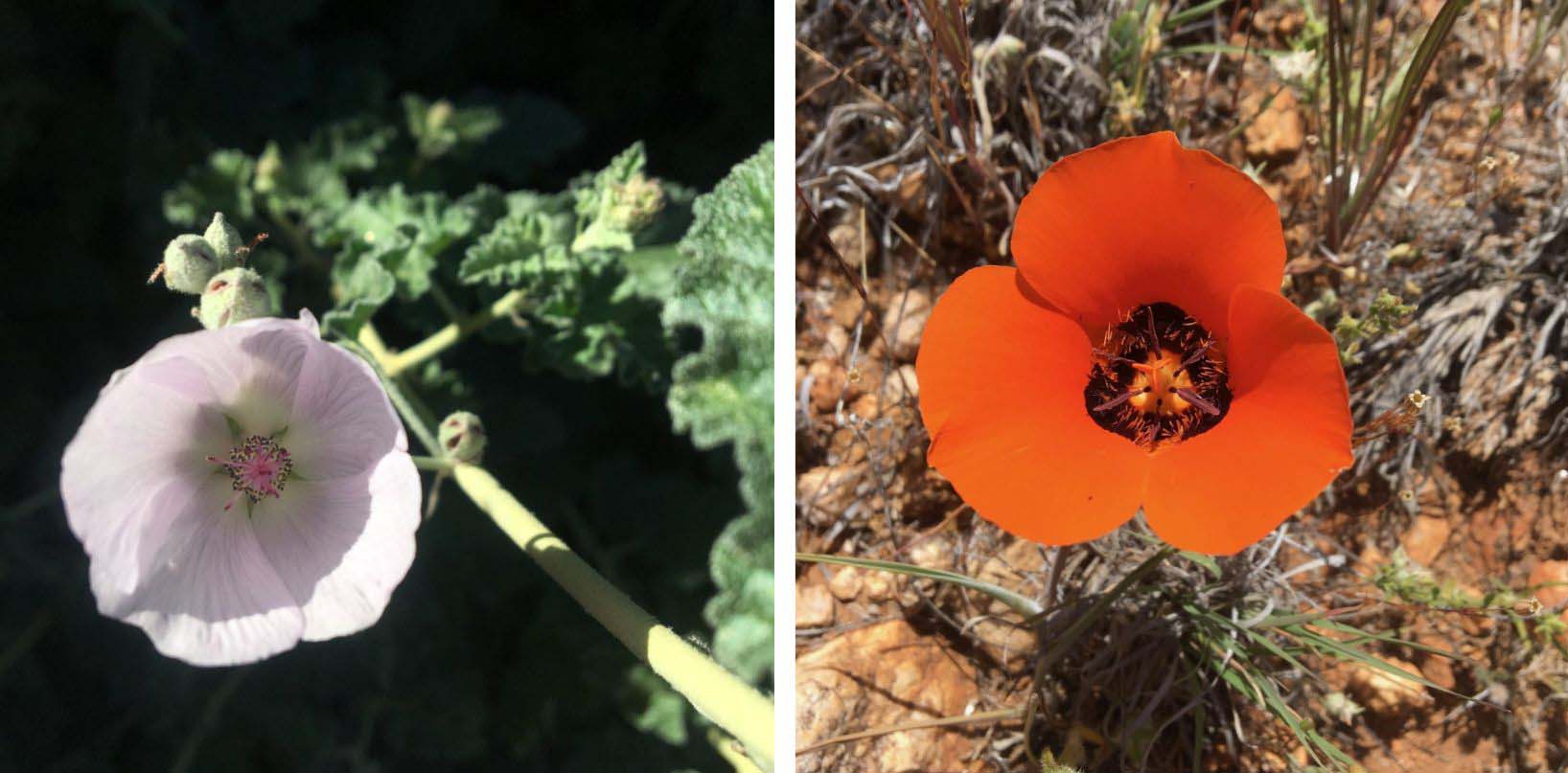
Owl’s clover (pink), desert globemallow (orange), and desert chicory (white) in the foothills of the Galiuro Mountains.
We’ve been enjoying a wet winter in the Sky Islands, and that always gets me excited for spring wildflowers. With the right temperatures and moisture, we can usually expect to start seeing wildflowers as soon as February in warmer low-elevation spots. Meanwhile, up in the mountains we can continue to find wildflowers blooming into summer.
Since I’m based in Tucson, Arizona, most of my experience with wildflowers is from around here, and my recommendations for good spots to see flowers will be local to this area. However, with so many different species and biomes in the region, I’m sure with a bit of luck, some help from friends, or a search of the internet, you can find great flowers near you as well, no matter where you’re located.
Generally, I find the best places to go looking for good flowers are up on the bajadas sweeping away from the steep mountains throughout the region. In the Tucson area the places that come to mind for wildflower viewing are Catalina State Park and Picacho Peak State Park. According to pictures that have already been shared on the web, Picacho Peak flowers are well underway, while a recent visit to Catalina State Park by some friends of mine turned up nothing. Though I don’t know what trails they visited, I would suggest the canyon loop trail or any others that pop up out of the main drainages and onto the hillsides.
Of course, when we start talking about wildflowers in the Sky Islands many people will immediately think of hillsides covered by California poppies (Eschscholzia californica). These displays can be truly breathtaking: carpeting the desert with golden blossoms over large areas.
A couple weeks ago I had the pleasure to camp out south of the Gila River east of Florence, Arizona, and came across some hillsides starting to pop with the color of poppies, which just goes to show that if you aren’t finding flowers near you, you can always visit some areas a little higher or lower than your current location to extend the viewing season.

Left: Poppies and lupines cover the hillsides, both near and far. Right: Beautiful blue-violet stalks of lupine rising from the desert floor.
But poppies aren’t the only thing popping this time of year! The wonderful thing about going out looking for flowers is that there are so many different species, shapes, and colors to appreciate.
Often, growing alongside the poppies you’ll find desert lupine (Lupinus sparsiflorus). These wonderful flowers add a splash of blue-violet (or sometimes white) that pairs beautifully with the golden orange poppies. Seeing their flower spike rising above the surrounding flowers is truly striking. In some areas, like along Park Link Road north of Tucson, lupine is currently blanketing both shoulders of the road for some stretches.
A personal favorite of mine is purple owl’s clover (Castilleja exserta). This is another flower that might be found along with poppies and lupine. However, in some places it can be the dominant flower and cover the desert floor in pink. The most spectacular views I’ve seen of owl’s clover have been on the western sloping foothills of the Galiuro Mountains while exploring rough four-wheel drive roads, but I’ve seen lots of them in Catalina State Park in years past too.

An abundance of purple owl’s clover in the foothills of the Galiuros. Up close, you can see the intricate and wonderful blossoms.
Desert globemallow (Sphaeralcea ambigua) is another plant you’re likely to find blooming right now, though it often has a much longer flowering season than those I’ve mentioned so far. This plant is quite variable in its flower color. Most of the plants around Tucson have a deep red-orange color, but in the Tucson Mountains and up the Catalina Highway I’ve seen pink and purple flowering plants. There are even some individuals that bloom white.
There are so many more species that are blooming this time of year: fiddleneck, mariposa and sego lilies, desert marigold, brittlebush, cream cups, New Mexico thistle, desert chicory, bluedicks, desert paintbrush… The list goes on and on, but the flowering won’t. So pack up a lunch and go hit your desert foothills in the next few weeks and let us know what you find!

Left: A pink, almost white, globemallow blooming at Picacho Peak State Park. Right: The orangest orange that ever oranged: a mariposa lily (Calochortus kennedyi).
Additional Resources
